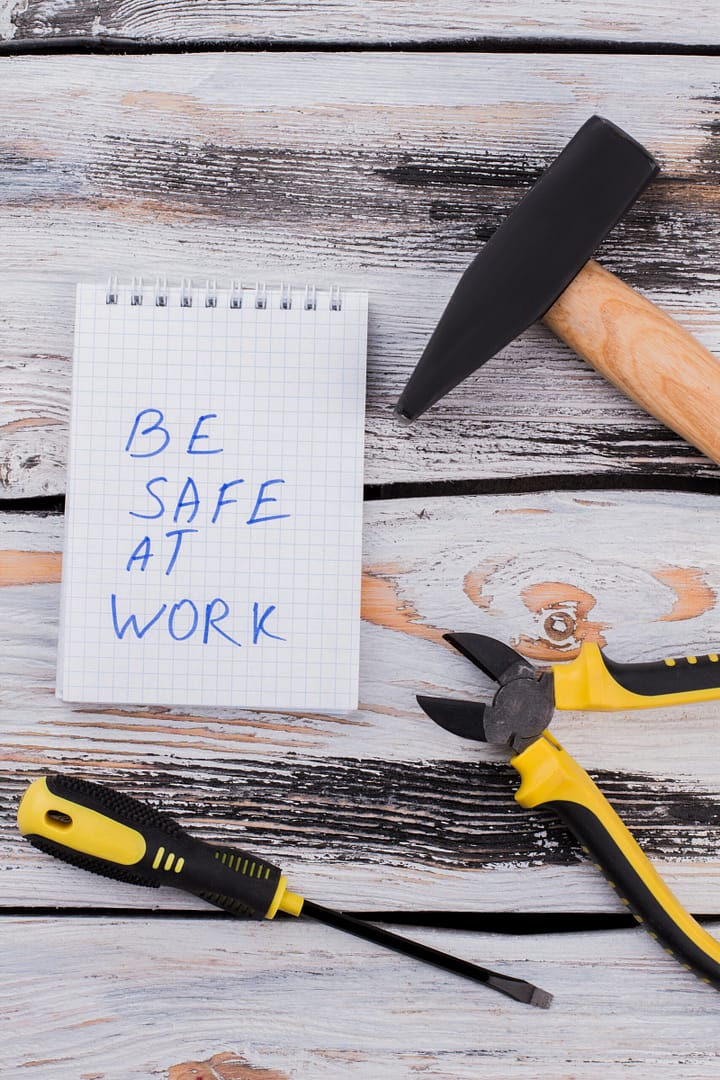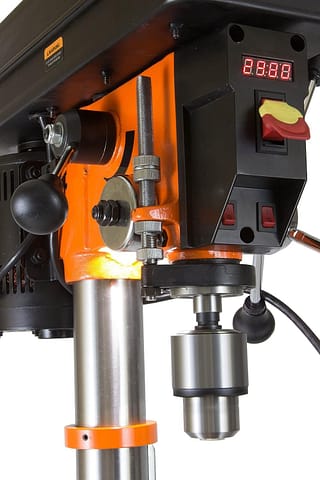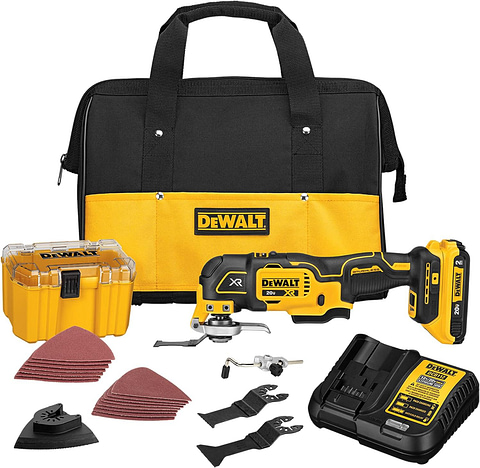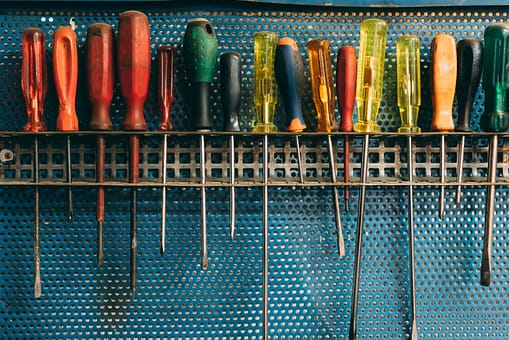So, you’ve got a DIY project lined up and you’re ready to tackle it head-on. But before you rev up that power tool, it’s essential to prioritize safety. Whether you’re a seasoned DIY enthusiast or a beginner, understanding proper safety precautions when using power tools is crucial. In this article, we’ll explore some valuable tips to ensure you can complete your project without any unwanted mishaps or injuries. From wearing the right protective gear to maintaining a clean workspace, we’ve got you covered. So, let’s jump right in and make sure your next DIY endeavor is as safe as possible. Power tools can be incredibly useful in completing a wide range of projects, whether you’re a professional contractor or a DIY enthusiast. However, it’s crucial to prioritize safety when using these tools to prevent accidents and injuries. In this article, we will provide you with some general safety tips, as well as specific safety guidelines for popular power tools like circular saws, drills, angle grinders, table saws, jigsaws, sanders, routers, chainsaws, nail guns, and air compressors.
General Safety Tips
Wear appropriate personal protective equipment (PPE)
When working with power tools, always wear the appropriate personal protective equipment (PPE) to safeguard yourself. This includes safety glasses to protect your eyes from flying debris, ear protection to prevent hearing damage from loud noises, gloves to protect your hands from cuts or impact, and appropriate clothing to protect your body from potential hazards.
Inspect and maintain power tools regularly
Regularly inspect your power tools for any signs of damage or malfunction. Check for frayed cords, loose parts, or cracks in the tool’s body. If you notice any issues, do not use the tool until it has been repaired or replaced. Additionally, make sure to clean and lubricate your power tools as recommended by the manufacturer to keep them in optimal condition.
Follow manufacturer’s instructions and guidelines
Always read and follow the manufacturer’s instructions and guidelines for each power tool you use. This includes understanding the tool’s intended use, recommended safety precautions, and maintenance procedures. Following these instructions will help ensure you use the tool correctly and minimize the risk of accidents.
Keep work areas clean and clutter-free
Maintaining a clean and clutter-free work area is essential for safety when using power tools. Remove any tripping hazards, such as loose cords or tools, from the floor. Clear away debris, sawdust, or other potential obstructions from your work surface. A clean and organized workspace allows you to focus on the task at hand without the risk of accidents caused by distractions or obstacles.
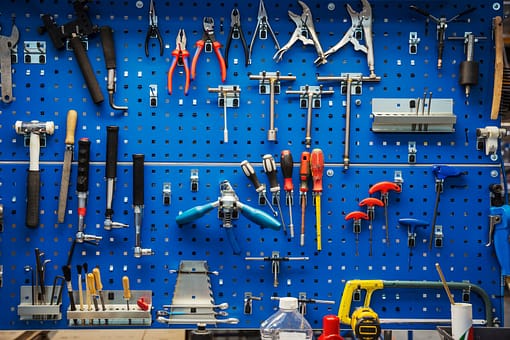
Electrical Safety
Use grounded or double-insulated tools
When working with power tools, it is crucial to use grounded or double-insulated tools. Grounded tools have a three-pronged plug that is connected to a grounding wire, whereas double-insulated tools are designed with extra insulation to provide an additional layer of protection against electrical shocks. These safety features help reduce the risk of electric shock while operating power tools.
Keep power cords away from sharp edges and heat sources
Ensure that power cords are kept away from sharp edges and heat sources to prevent damage and potential electrical hazards. Avoid running cords across walkways or areas where they can be stepped on or tripped over. Make use of cord protectors or cable management systems to safely route cords away from potential hazards.
Avoid using power tools in wet or damp conditions
Water and electricity don’t mix, so it’s important to avoid using power tools in wet or damp conditions. Moisture increases the risk of electrical shock. If you need to work in a wet environment, make sure you use tools specifically designed for wet or damp conditions and follow the manufacturer’s instructions for their safe use.
Disconnect tools from power source before making adjustments
Before making any adjustments or performing maintenance on a power tool, always disconnect it from the power source. This prevents accidental activation of the tool while your hands or body parts are near the moving parts, reducing the risk of injuries. Take extra caution when changing blades or bits, ensuring the tool is completely powered off and unplugged.

Tool-Specific Safety
Now let’s dive into some specific safety guidelines for popular power tools:
Circular Saw
A circular saw is a versatile cutting tool commonly used for woodworking and construction projects. When using a circular saw, follow these safety tips:
- Wear safety glasses and ear protection to protect against flying debris and loud noises.
- Ensure that the blade guard is functioning properly and covers the blade when not in use.
- Keep both hands on the saw’s handles during operation for maximum control and stability.
- When cutting smaller pieces, use a push stick or clamp to secure them firmly, keeping your hands at a safe distance from the blade.
Drill
Drills are essential tools for drilling holes, driving screws, and other tasks. To use a drill safely, consider the following guidelines:
- Wear eye protection and appropriate clothing to shield yourself from potential hazards.
- Select the correct drill bit for the material you are drilling into to ensure efficient and safe drilling.
- Avoid applying excessive pressure that may cause the drill bit to bind, leading to kickback or breakage.
- Secure your workpieces with clamps or a vise to prevent them from moving during drilling, reducing the risk of accidents.
Angle Grinder
Angle grinders are powerful tools used for grinding, cutting, and polishing a variety of materials. Follow these safety precautions when using an angle grinder:
- Protect your face and eyes by wearing a face shield, along with gloves and long pants.
- Choose the appropriate grinding or cutting wheel for your intended task.
- Avoid applying excessive pressure on the grinder, as this can overheat the tool and potentially cause accidents.
- Regularly inspect the grinder’s wheel for any signs of damage or wear, and replace it if necessary to maintain safe operation.
Table Saw
Table saws are commonly used for woodworking projects and require careful handling. Here’s how to use a table saw safely:
- Use a push stick or push block to feed the material into the blade, ensuring your hands are kept at a safe distance from the blade.
- Ensure that the saw’s blade is properly aligned and sharp for clean and accurate cuts.
- Keep the table and surrounding area clear of debris to prevent interference with the material or the saw’s operation.
- Avoid performing freehand cuts without a guide, as this can result in uncontrolled and potentially dangerous cuts.
Jigsaw
Jigsaws are versatile cutting tools that allow for intricate curved cuts in various materials. Use the following safety precautions when using a jigsaw:
- Wear safety goggles and a dust mask to protect your eyes and respiratory system from sawdust particles.
- Choose the appropriate blade for the material you are cutting, ensuring it is securely fastened to the tool.
- Maintain a firm grip on the jigsaw to have full control over the cutting action, avoiding any twisting or jerking motions.
- Secure the workpiece firmly in place to prevent movement during cutting, reducing the risk of accidents.
Sander
Sanders are used for smoothing and finishing surfaces. To use a sander safely, consider the following tips:
- Wear a dust mask and eye protection to shield yourself from airborne particles created during sanding.
- Ensure that the workpiece is securely fastened or clamped to prevent it from moving while sanding.
- Move the sander in the direction of the wood grain to achieve a smooth finish and minimize the risk of splintering.
- Avoid applying excessive pressure on the sander, which can cause it to stall or create uneven results.
Router
Routers are versatile tools for shaping and creating decorative edges on wood. Stay safe while using a router with these guidelines:
- Wear eye protection and appropriate clothing to protect against flying debris and potential hazards.
- Understand and follow the proper techniques for handling and feeding the wood into the router bit.
- Keep both hands on the router’s handles during operation, maintaining control and stability.
- Secure the workpiece firmly to the table or with clamps to prevent it from shifting or moving during routing.
Chainsaw
Chainsaws are powerful tools used for cutting trees, branches, and other wood materials. Adhere to these safety measures when using a chainsaw:
- Wear eye protection, ear protection, gloves, and appropriate clothing for safety.
- Ensure that the chain brake is engaged when the chainsaw is not in use to prevent accidental activation.
- Only use a chainsaw with a sharp and properly tensioned chain to maximize cutting efficiency and reduce the risk of kickback.
- Avoid operating a chainsaw alone, especially when dealing with larger trees or heavy cutting tasks.
Nail Gun
Nail guns are time-saving tools used for quickly fastening materials with nails or staples. Keep yourself safe when using a nail gun by following these precautions:
- Wear appropriate eye protection and appropriate clothing to protect against flying debris.
- Keep your hands and other body parts away from the nail gun’s muzzle to avoid accidental firing.
- Use the nail gun with the correct size and type of nails or staples recommended for the application.
- Practice proper trigger control to avoid unintentional or uncontrolled firing of nails.
Air Compressor
Air compressors are often used with various pneumatic tools. To ensure your safety when using an air compressor, follow these guidelines:
- Wear ear protection to prevent hearing damage from the noise generated by the compressor.
- Regularly inspect hoses and fittings for any damage, leaks, or loose connections, and replace or repair as needed.
- Handle compressed air tools with care, always pointing them away from yourself and others to prevent injury.
- After using the air compressor, release pressure and drain the tank following the manufacturer’s instructions.
By following these safety tips and guidelines, you can minimize the risk of accidents and injuries when using power tools. Remember, your safety should always be a priority, and taking the necessary precautions will allow you to work confidently and efficiently with power tools. Stay safe, and happy woodworking!
